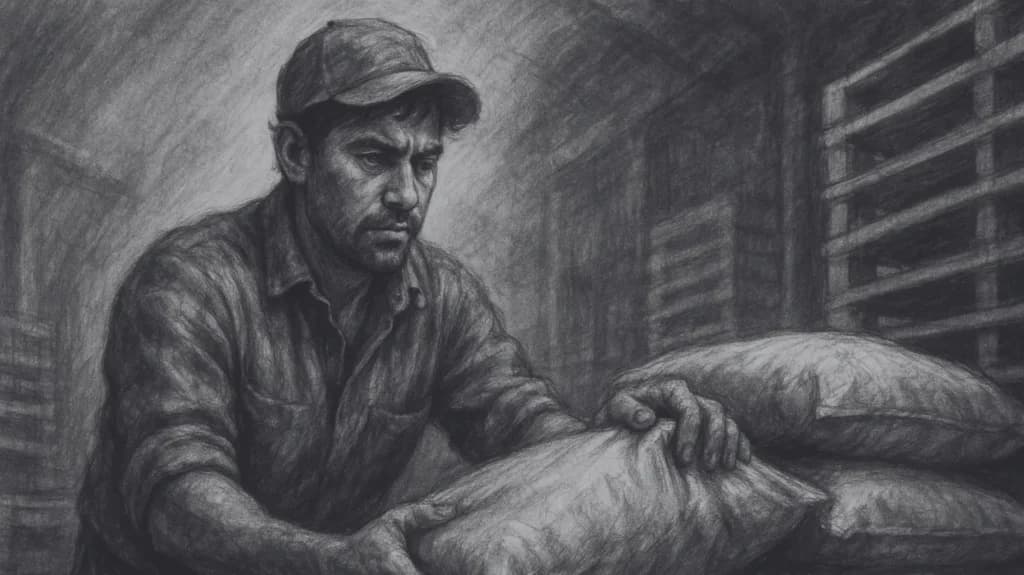
"The very worst use of time is to do well what need not be done at all."
Benjamin B. Tregoe
Founder KT Decision Making Process
- Date
The Kepner-Tregoe Matrix: Clear Thinking for Tough Decisions (That You Can Stand Behind)
posted in Built For Hard tools

Adam Kreek
The Kepner-Tregoe (K-T) Matrix is a step-by-step decision framework that separates what’s going on, why it happened, what to do, and what could go wrong next. It turns high-stakes choices into values-aligned, evidence-based action. Download the worksheet below to run the process with your team.
Why this matters now
Decision-making is the leadership skill. Most teams still choose like they’re at a buffet—grab a little of everything and hope nothing upsets the stomach. I prefer a cleaner kitchen.
Kepner-Tregoe gives you a repeatable way to slow down for the big calls: clarify your purpose, separate musts from wants, weigh options against what matters, then stress-test for risk. And yes, it links directly to your values—because every “must” and every trade-off is a values judgement.
Download: KT Decision Analysis Worksheet (step-by-step guide with scoring tables) — make a copy of this google doc and fill it out yourself.
Quick and Dirty: Let AI Run Your K-T Analysis
Copy/paste this prompt into your favourite AI assistant and let it walk you through the process step by step:
You are an expert decision coach using the Kepner-Tregoe (K-T) Decision Analysis framework.
Guide me through making a high-stakes decision in 7 steps.
Ask me one question at a time, wait for my answer, then move to the next.
Here’s the structure to follow:
- Clarify Purpose – Ask me what decision I’m trying to make and what success looks like (short + long term).
- Musts vs. Wants – Help me list objectives. Classify each as a “must” (mandatory, measurable, realistic) or “want.”
- Weight Wants – For each want, have me assign a weight from 1–10 based on importance.
- Screen Alternatives – Ask me to list possible options. Eliminate any that fail a “must.”
- Score Alternatives – For remaining options, help me score each want (0–10). Multiply by the want’s weight, then total scores.
- Assess Risks – For the top-scoring option, ask what could go wrong short/long term, what happens if we’re close to a must, and where assumptions/data might be weak.
- Make Choice + Next Step – Ask if I accept the risks. If yes, confirm the choice. If not, revisit the next option. Then ask me to name the smallest next step to move forward.
Throughout, remind me to connect each must, want, and trade-off to my core values.
A fast history (and a fun aside)
In the 1960s, Charles Kepner and Benjamin Tregoe studied how elite USAF managers at RAND made decisions. They noticed the best performers couldn’t always explain their thinking, but they consistently followed a more logical pattern. K-T turned that pattern into a teachable method.
In rowing, the best stroke isn’t always the prettiest—it’s the one that’s repeatable under pressure, at 36 strokes per minute, in cross-chop, with your lungs on fire. Same with decisions. This method is solid.
The four questions K-T answers
- What is going on? – Situation Appraisal
- Why did it happen? – Problem Analysis
- What should we do? – Decision Analysis
- What lies ahead? – Potential Problem (and Opportunity) Analysis
Use each tool independently, or run them end-to-end for big, messy issues.

Case studies: what good looks like
Microsoft (Customer Service & Support)
Under Satya Nadella, CSS embedded K-T methods to drive customer obsession and faster resolutions. Within three months they saw:
- DTS (days to solve) down ~1 day per case
- TMPI (time minutes per incident) down 27 minutes
- Customer satisfaction up 3.3%
More than 7,000 team members now apply a shared playbook. Translation: fewer heroics, more systems. My kind of party.
Target (Global IT Incident Management)
Facing complex, high-stakes incidents across geographies, Target standardized on K-T to remove panic and guess-and-check. Results after four months:
- 74% reduction in average time-to-restore
- Fewer global incidents and tighter variation
Baseline first, then streamline steps and comms, then train the cadence. That’s how you make “calm under pressure” an SOP, not a personality trait.
Where values meet decisions (this is the secret sauce)
K-T’s wants vs. musts are your values showing up on paper:
- A must = non-negotiable, measurable, realistic (safety threshold, legal compliance, margin floor).
- A want = desirable outcome ranked by importance (brand lift, speed, innovation, experience).
When you weigh wants, you’re literally prioritizing values. When you eliminate options that miss a must, you’re protecting values. If your team hasn’t articulated values, the scoring turns into politics. Do the values work; then run the matrix.
How to run Kepner-Tregoe Decision Analysis (step-by-step)
- Clarify purpose
What decision are we making? Success looks like… (short and long term). - List objectives, split into musts and wants
- Musts: mandatory, measurable, realistic. One “no” and it becomes a want.
- Wants: rank 1–10 for importance (that ranking = your value judgement).
- Screen alternatives
If an option fails any must, it’s No-Go. No exceptions, no “favourite child” exemptions. - Score remaining options against wants
For each want: best option gets 10, others 0–9 relative performance. Multiply by the want’s weight. Sum totals. - Assess risk starting with the top score
What could go wrong (near + long term)? What happens if we’re right on the edge of a must? Where might our data be shaky? - Make the best balanced choice
If you accept the risks for the top option, choose it. If not, move to the next score. This isn’t perfection; it’s clarity with accountability. - Plan action
Smallest, obvious next step. Owner. Deadline. Then communicate the why—including the values that drove the trade-offs.
Grab the worksheet to do all of this in minutes: weights, scores, and a tidy risk page you can show your board. Download the Google Doc here.
The other three tools (use them when…)
1) Situation Appraisal — What’s going on?
Map concerns, set priorities (impact × urgency × trend), plan next steps, and determine involvement. Avoids flailing and “action without direction.”
2) Problem Analysis — Why did it happen?
Describe the deviation, list possible causes, test against facts, confirm the true cause, then think beyond the fix. Because “we rebooted the server” is not a root cause; it’s an intermission.
3) Potential Problem/Opportunity Analysis — What lies ahead?
Anticipate threats and upsides. For each: likely causes → preventive action → contingency plan → triggers. Pro tip: pre-declare the trigger so no one argues with the smoke alarm at 3 a.m.

When to use K-T (and when to holster it)
Use it when:
- Stakes are high; outcomes affect people, customers, safety, or significant dollars.
- Options are many, time is tight, bias is likely.
- You need transparent reasoning to get buy-in.
Don’t force it when:
- You need divergent, creative leaps (start with ideation, then evaluate with K-T).
- Information is unknowable, and speed trumps rigour (make a reversible call, gather data, revisit).
- It’s lunch. Please don’t run a must/want matrix on tacos.
“Managers usually do an unsatisfactory job of setting priorities because they approach each issue as it comes along, on the merits presented by the narrow context of the issue itself.”
— Charles H. Kepner
When (Not) to Use the Kepner-Tregoe Matrix, beyond Tacos
The K-T Matrix shines when the stakes are high, the facts are clear, and you need to build consensus around a rational, defensible choice. Think mergers, IT outages, major capital investments, and safety issues. These are moments when slowing down is a sign of leadership, not weakness.
But here’s the truth most consultants won’t tell you: don’t use K-T for everything. The method can feel like bringing a microscope to a picnic—it’s too much gear for the setting.

When not to use it:
- Speed matters more than precision. In a crisis where seconds count, use a playbook, not a 9-step matrix.
- You don’t have the data. K-T depends on solid facts. If you’re guessing anyway, the spreadsheet won’t save you.
- Creative leaps are required. This is not a brainstorming tool. If you’re designing the next iPhone, start with divergent thinking first.
- Low-stakes choices. Please don’t use a must/want scale for tacos. That’s not leadership—it’s a lunch delay. (And if you’re scoring tacos on a spreadsheet, you might need a vacation.)
- When values aren’t clear. If your team hasn’t agreed on what truly matters, the weighting system becomes a matter of politics rather than clarity.
Drawbacks to watch out for:
- Time-intensive. You need patience and discipline—it’s not built for “move fast and break things.”
- Rigid. It requires sticking to the process to get the payoff, which can frustrate leaders who thrive on intuition.
- Data-heavy. If you don’t have good information, the method bogs down. Garbage in, garbage out.
Bottom line: Use K-T like a sharp chef’s knife. Essential when you need clean cuts, dangerous when you swing it wildly, and unnecessary when all you need is a butter knife.

Want to Go Deeper? Watch This
If you want to see Decision Analysis in action (with fewer spreadsheets and more common sense), check out this 13-minute YouTube tutorial: Decision Analysis – How to make those big project and design decisions.
It’s led by Paul Allen, a Six Sigma Blackbelt with 25+ years in the trenches. His style is refreshingly no-nonsense: less theory, more “let’s fix the problem and make money.”
Allen walks through the Kepner-Tregoe method with a simple car-buying analogy. And he uses funny british terms like "boot." You’ll see:
- How to set musts (non-negotiables) and wants (preferences).
- Why does weighing your wants upfront keep bias out?
- How to eliminate options that don’t pass the sniff test (sorry, Ferrari, two doors won’t cut it).
- How to score and calculate the best option (Fiesta beats Corsa—math wins, bias loses).
If you’ve ever wondered how to make high-stakes decisions without just going with your gut—or your boss’s favourite colour—this video is worth your coffee break.
FAQs
Try this with your next big call
- Name the decision.
- Write three musts (measurable).
- Write five wants and weigh them.
- List 3–4 options, score them, then do a quick risk pass on the winner.
- Decide. Communicate the values behind the trade-offs. Ship.
Download the KT Decision Analysis Worksheet — linked here — and run the play with your team this week. If Olympians need to see a cue ~13 times before it sticks, your organization probably needs at least that many reps too. Inculcate the cadence until clear thinking becomes culture.
Great decisions aren’t lucky—they’re values-driven, repeatable, and calm enough to stand in a storm.
–––––
Adam Kreek and his team are on a mission to positively impact organizational cultures and leaders who make things happen.
He authored the bestselling business book, The Responsibility Ethic: 12 Strategies Exceptional People Use to Do the Work and Make Success Happen.
Want to increase your leadership achievement? Learn more about Kreek’s coaching here.
Want to book a keynote that leaves a lasting impact? Learn more about Kreek’s live event service here.
Other popular blog posts:
Discover the ViDA Values Framework, a structured approach to defining and living your core values. Read this
After 18 years and thousands of speeches, here’s what Kreek has learned about motivating any audience—without the fluff. Check it out
Most people set goals the wrong way—here’s how CLEAR goals are better than SMART goals, and how they can help you achieve more, with less frustration. Learn more